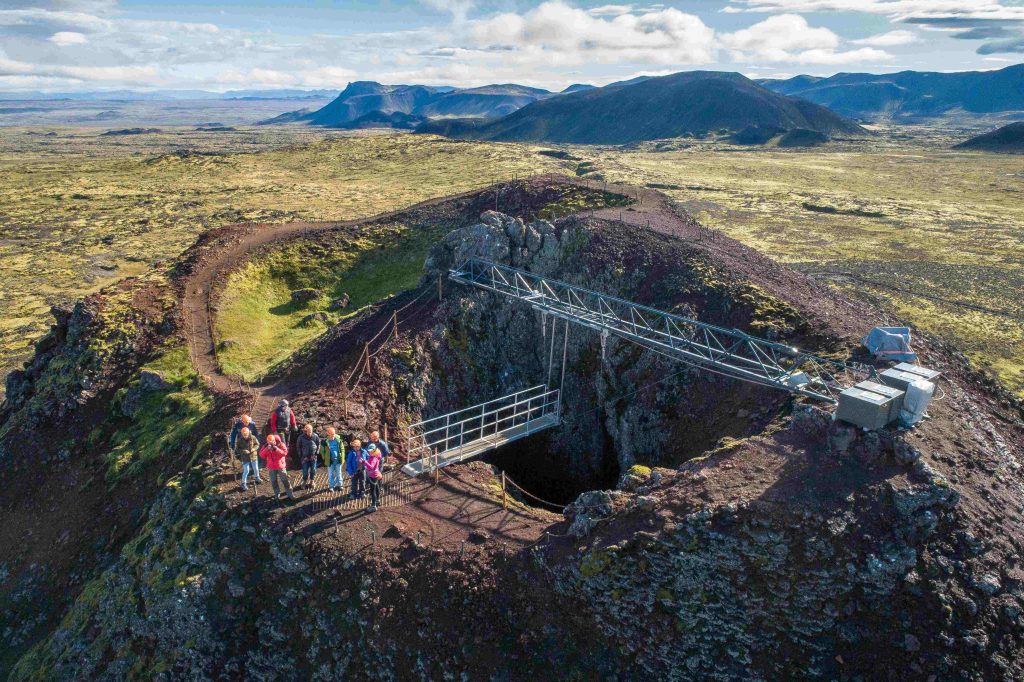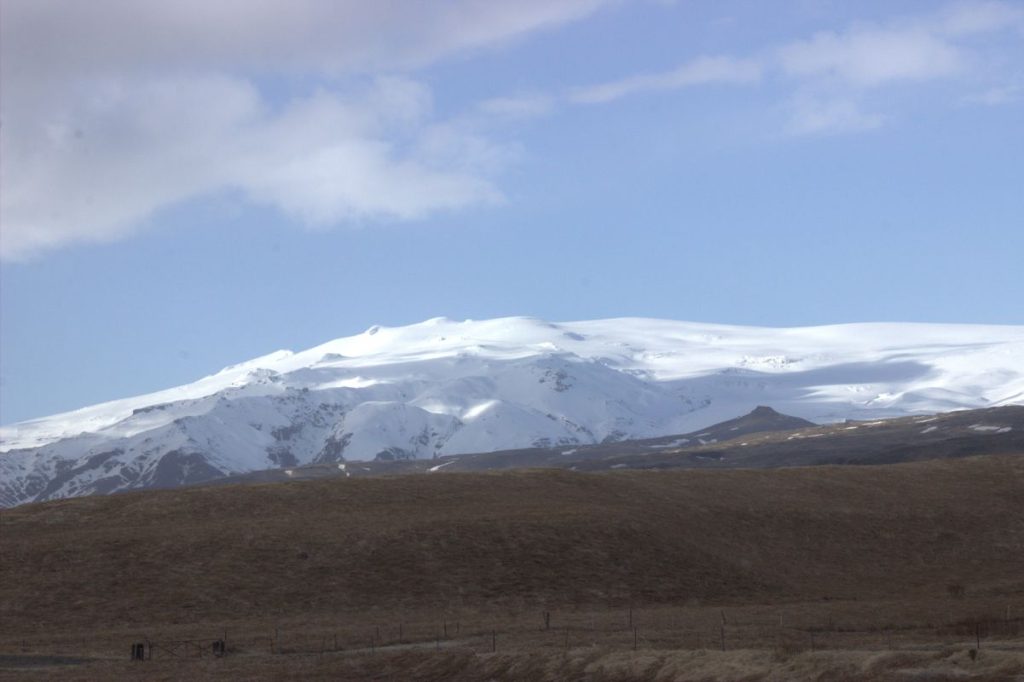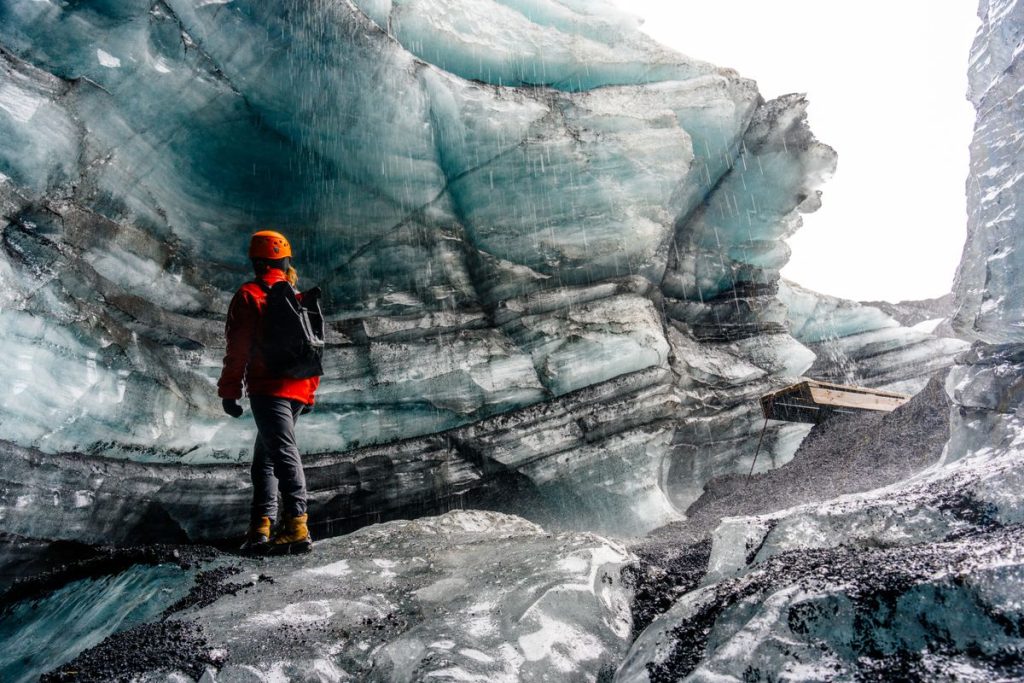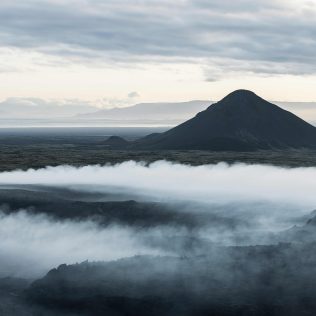Iceland is famously known as the land of fire and ice, and for good reason—it’s home to around 130 volcanoes scattered across the island. These geological wonders have shaped Iceland’s dramatic landscapes for thousands of years and continue to fascinate travelers today. One of the most talked-about eruptions in recent years was the Fagradalsfjall eruption, which began on March 19, 2021. It lasted six months and drew worldwide attention, turning Iceland’s volcanoes into must-see attractions.
Whether you’re planning a road trip or just want to add a volcanic adventure to your itinerary, Iceland’s volcanoes are some of the most exciting natural landmarks to explore. From crater hikes and lava fields to active eruption sites (if you’re lucky), there’s no shortage of jaw-dropping sights. Best of all, many of these volcanoes are easily accessible by rental car, giving you the freedom to explore at your own pace.
In this guide, we’ll introduce you to the top 3 volcanoes to visit in Iceland, share where they’re located, and offer tips on how to reach them by car.
What car should you rent if you want to visit volcanoes in Iceland?
There are a few important things to consider when planning your volcano road trip in Iceland. First, think about the weather during the season you’re visiting, as conditions can vary dramatically between summer and winter. You should also factor in the number of people you’re traveling with and how much luggage you’ll be bringing. Most importantly, consider which volcanoes you plan to visit, where they’re located, and what kind of roads you’ll need to drive on to reach them.
If you’re visiting Iceland in the summer, many volcanoes can be accessed with an economy or compact car, especially if you’re traveling solo or as a couple. However, if you’re in a group of three or more, an intermediate or full-size car will be more comfortable. In winter, a 4WD vehicle is essential to handle icy roads and unpredictable conditions, especially if you’re heading into more remote or rugged areas.
1. Thríhnúkagígur Volcano (Þríhnúkagígur)
Thríhnúkagígur is a rare geological wonder located just outside of Reykjavík. This dormant volcano, which last erupted about 4,000 years ago, offers something truly unique: the chance to go inside a real volcano. Its name means “Three Peaks Crater” in Icelandic, referring to the trio of distinct crater formations at the site. But what makes Thríhnúkagígur so special is not just what’s above ground—it’s what lies beneath.
Unlike most volcanoes, where the magma chamber seals shut after an eruption, Thríhnúkagígur’s chamber remains open and accessible. Visitors can descend nearly 700 feet into this massive underground cavity via a specially designed lift. Scientists believe the magma either drained away or cooled within the chamber walls, leaving behind this extraordinary hollow space. It’s the only place on Earth where you can step inside a volcano’s magma chamber—an experience found nowhere else in the world.

2. Eyjafjallajökull
Eyjafjallajökull is one of Iceland’s most famous volcanoes, largely thanks to its 2010 eruption that disrupted air travel across Europe and made headlines worldwide. Sitting beneath a glacier of the same name, Eyjafjallajökull is a striking feature on Iceland’s south coast. The volcano itself is part of a larger volcanic system and reaches a height of about 1,651 meters (5,417 feet). Though it’s no longer erupting, the surrounding area remains a powerful reminder of Iceland’s dynamic geological forces.
While visitors can’t hike directly into the crater, you can explore the areas around the volcano, including scenic viewpoints and glaciers. The Eyjafjallajökull Visitor Centre near the village of Hvolsvöllur is a great place to learn more about the eruption’s impact on local life and farming. Nearby attractions like Seljalandsfoss and Skógafoss waterfalls are also easily accessible and make this a worthwhile stop along your south coast journey.
To reach Eyjafjallajökull by car, drive east from Reykjavík on Route 1 (the Ring Road). After passing Hella and Hvolsvöllur, you’ll find signposts pointing to various viewing areas and the visitor centre. The drive takes around two to two and a half hours depending on stops. A 2WD vehicle is usually sufficient during summer, but if you’re traveling in winter or want to explore rougher tracks near the glacier, a 4×4 rental is recommended.

3. Katla
Katla is one of Iceland’s most powerful and closely monitored volcanoes, sitting beneath the massive Mýrdalsjökull glacier in the south of Iceland. Known for its explosive eruptions, Katla has erupted roughly every 40 to 80 years in the past—though its last major eruption was in 1918. The volcano is hidden under thick ice, but its presence is felt through the surrounding landscape, glacial rivers, and the legends that surround it. Despite being overdue for an eruption, Katla remains quiet yet active, making it a fascinating destination for curious travelers.
To get close to Katla Volcano, you can drive from Reykjavík to the small town of Vík via Route 1 (Ring Road), a journey that takes about 2.5 hours. From there, you’ll head towards the glacier via guided super jeep tours that can take you up to Katla’s ice cave in Kötlujökull, one of the glacier tongues of Mýrdalsjökull. You can’t visit the volcano’s core or glacier safely without a guide due to the unpredictable terrain and possible subglacial activity, but a self-drive tour to Vík and then joining a local operator is the best way to experience Katla up close. A 4WD rental car is highly recommended, especially in winter.

Tips To Ensure Safe Travel
The weather in Iceland can change quickly, and storms may leave you stuck in remote areas if you’re not prepared. Although volcanic eruptions are rare during short visits, it’s still important to stay safe when exploring Iceland’s volcanoes by rental car. Here are a few essential safety tips to keep in mind:
- Always check the latest weather updates at vedur.is and review current road conditions at road.is before setting out.
- Icelandic roads—especially in rural or highland areas—can be tricky, even in summer. If you’re unsure about driving in challenging conditions, consider joining a guided volcano tour and use your rental car for easier days.
- Save Iceland’s emergency number: 112.
- And most importantly, never stray from marked paths in geothermal zones. Mud pools can look harmless but may reach temperatures close to 100°C. Stay cautious and respect nature’s power.
